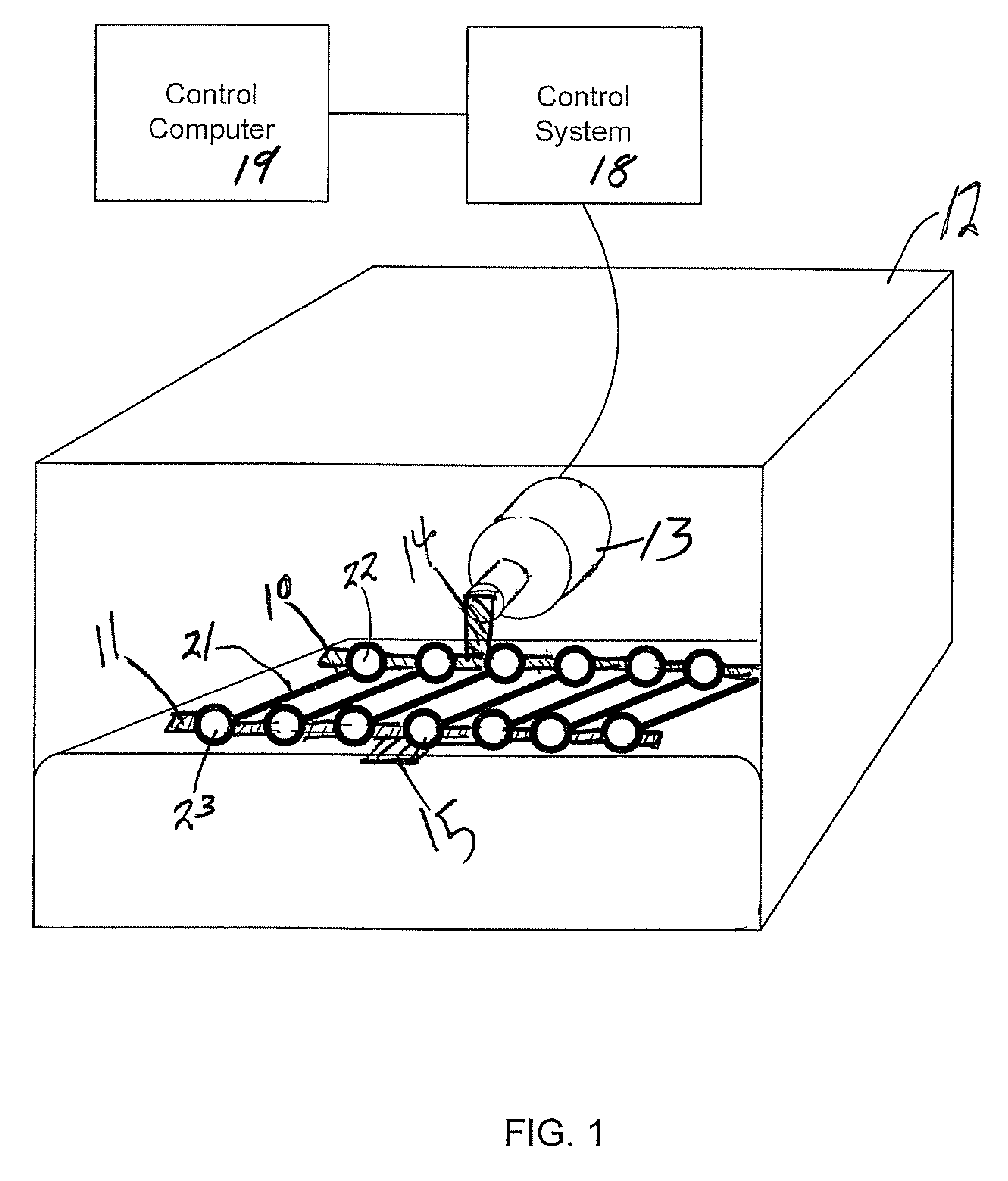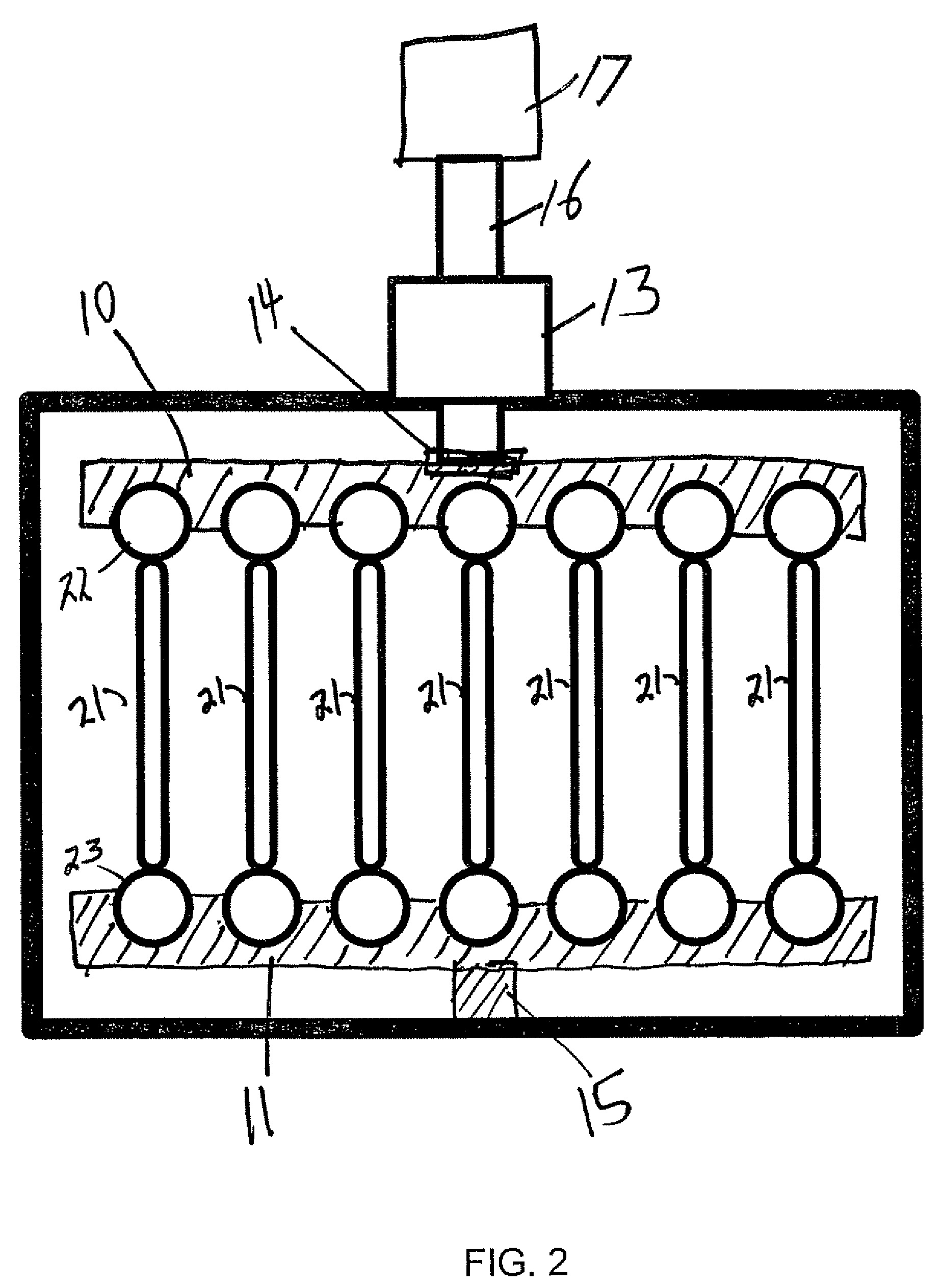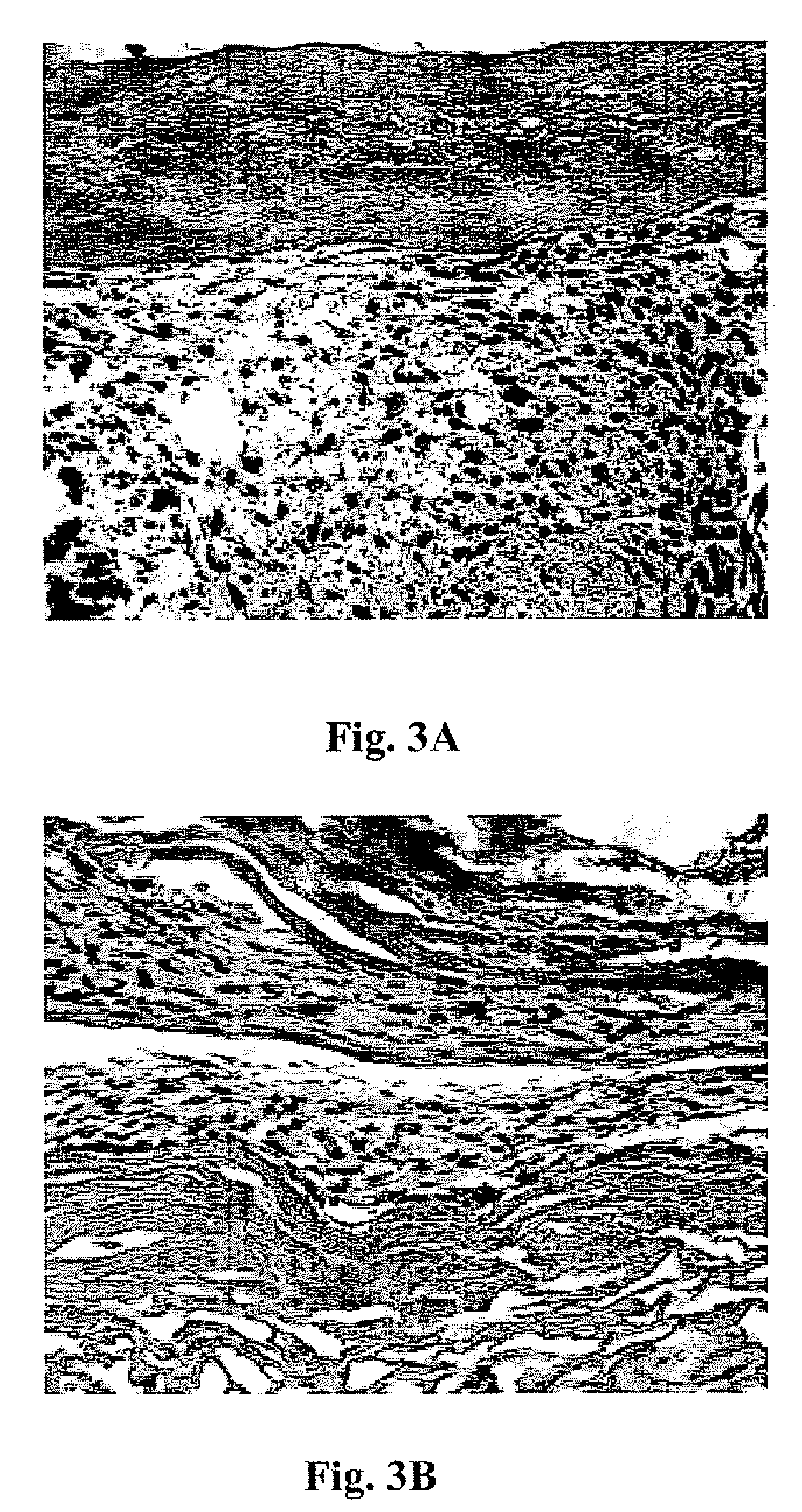Bioreactor system and method of enhancing functionality of muscle cultured in vitro
a bioreactor and muscle technology, applied in the direction of skeletal/connective tissue cells, prosthesis, ligaments, etc., can solve the problems of ineffective clinical treatment, lack of clinical utility, and approach that has significant limitations, so as to enhance the functionality of muscle tissue
- Summary
- Abstract
- Description
- Claims
- Application Information
AI Technical Summary
Benefits of technology
Problems solved by technology
Method used
Image
Examples
example 1
[0039]A bioreactor system consisted of an actuator mounted on a tissue culture-compatible container which was designed to provide controlled cyclic strain to muscle tissue scaffolds, as shown in FIG. 2. The linear actuator was controlled by a linear motor controller system and a control computer, used for programming and subsequent monitoring of the actuator. Primary human skeletal muscle precursor cells were isolated, grown and expanded in culture. The cells were seeded onto collagen-based muscle scaffold strips derived from porcine bladder tissue (1.0×0.3×0.3 cm3). After two days of static culture, the muscle cell seeded scaffolds were placed in the bioreactor system and programmed linear stretching cycles were applied (LinMot®). The controlled cycle strain was programmed to exert ±10% of the initial length of the cell seeded scaffolds at a frequency of 3 times per minute for the first 5 minutes of every hour. The bioreactor was continuously operated for up to 3 weeks after the in...
example 2
[0042]This example presents the results of more detailed studies with the bioreactor system described above. The system, in overview, consisted of a linear actuator mounted on a tissue container to provide a controlled cyclic strain to muscle tissue scaffolds. Primary human muscle cells were seeded onto scaffolds and placed in the bioreactor system and subjected to cyclic strain equivalent to ≈±10% stretch of the original scaffold length; strain was applied 3 times / min for the first 5 min / hour for periods ranging from 5 days to 3 weeks. Following this conditioning protocol, the cell constructs were assessed for structural and functional parameters in vitro; cell and scaffold constructs under static culture conditions (i.e., no cyclic strain) were run in parallel. In a separate in vivo experiments, both the structures conditioned in the bioreactors for 5 days and control tissue structures maintained under static culture conditions were implanted onto the latissimus dorsi muscle of nu...
PUM
 Login to View More
Login to View More Abstract
Description
Claims
Application Information
 Login to View More
Login to View More - R&D
- Intellectual Property
- Life Sciences
- Materials
- Tech Scout
- Unparalleled Data Quality
- Higher Quality Content
- 60% Fewer Hallucinations
Browse by: Latest US Patents, China's latest patents, Technical Efficacy Thesaurus, Application Domain, Technology Topic, Popular Technical Reports.
© 2025 PatSnap. All rights reserved.Legal|Privacy policy|Modern Slavery Act Transparency Statement|Sitemap|About US| Contact US: help@patsnap.com



